Nationality American Pseudonym(s) Berni Wrightson | Name Bernie Wrightson Role Artist | |
 | ||
Awards Shazam Award 1972, 1973, 1974; H.P. Lovecraft Award 2007; National Cartoonists Society Award 2012; Inkwell Awards Special Recognition Award, 2015 Books City of Others, Creepy Presents Bernie Wrightson Movies Heavy Metal, Swamp Thing, Jenifer, The Return of Swamp Thing Similar People | ||
Artist spotlight bernie wrightson part 1
Bernard Albert "Bernie" Wrightson (October 27, 1948 – March 18, 2017), sometimes credited as Berni Wrightson, was an American artist, known for co-creating the Swamp Thing, his adaptation of the novel Frankenstein illustration work, and for his other horror comics and illustrations, which feature his trademark intricate pen and brushwork.
Contents
- Artist spotlight bernie wrightson part 1
- Artist spotlight bernie wrightson part 4
- Early life
- Career
- Swamp Thing
- Warren and The Studio
- Later career
- Personal life
- Creative legacy
- Awards
- References
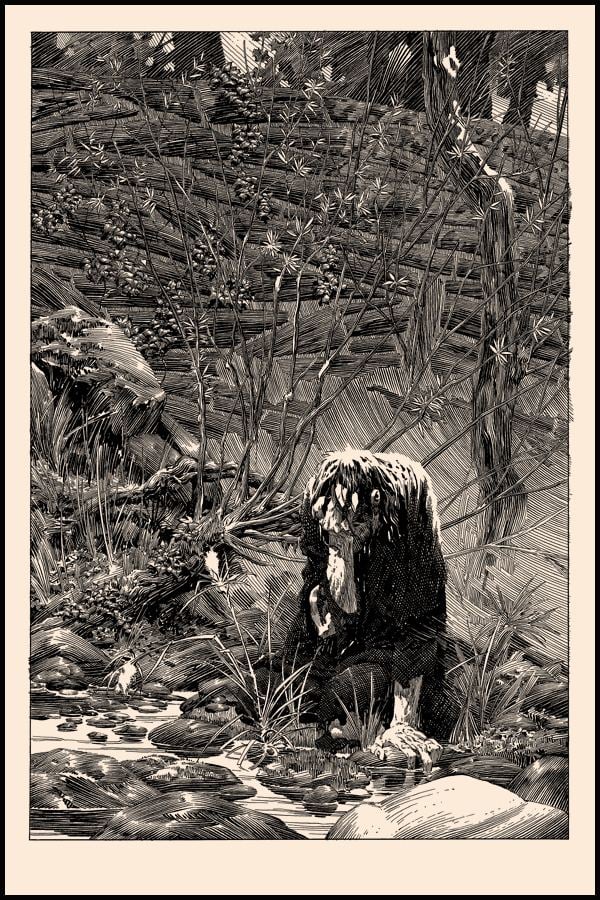
Artist spotlight bernie wrightson part 4
Early life
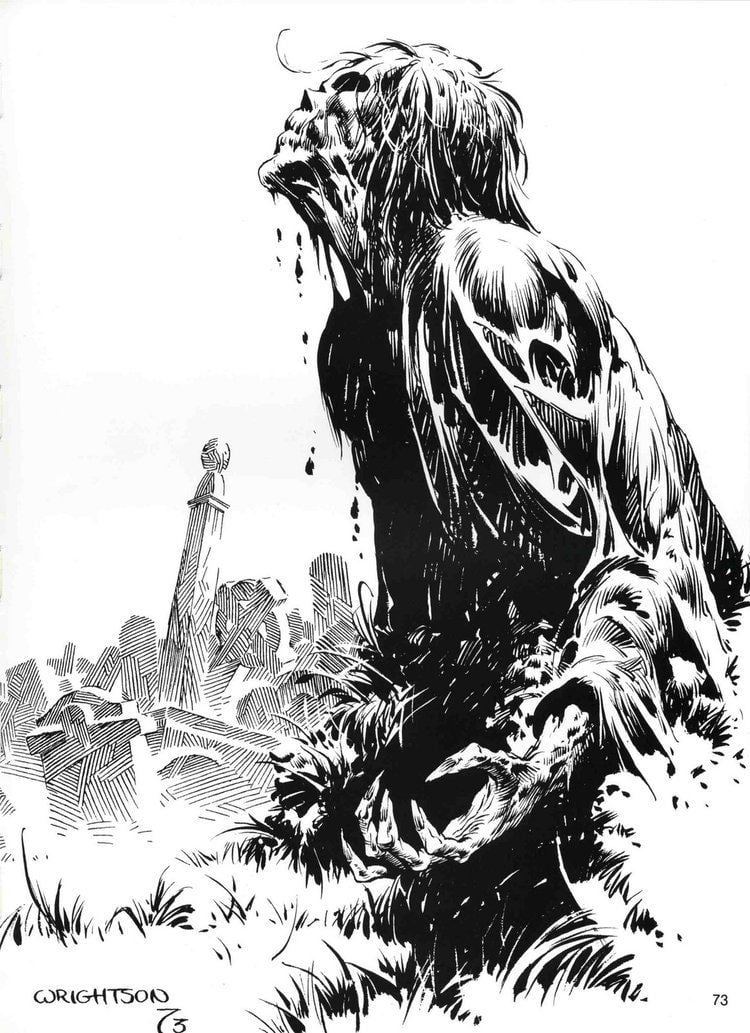
Wrightson was born October 27, 1948 in Dundalk, Maryland. He received training in art from watching Jon Gnagy on television, reading comics, particularly those of EC, as well as through a correspondence course from the Famous Artists School. His artistic influences were Frank Frazetta, Al Williamson, Al Dorne, Graham Ingels, Jack Davis and Howard Pyle. He published a piece of fan art, containing a headstone bearing the inscription "Berni Wrightson, Dec. 15, 1965", on page 33 of Warren Publishing's Creepy #9 (cover-dated June 1966).
Career
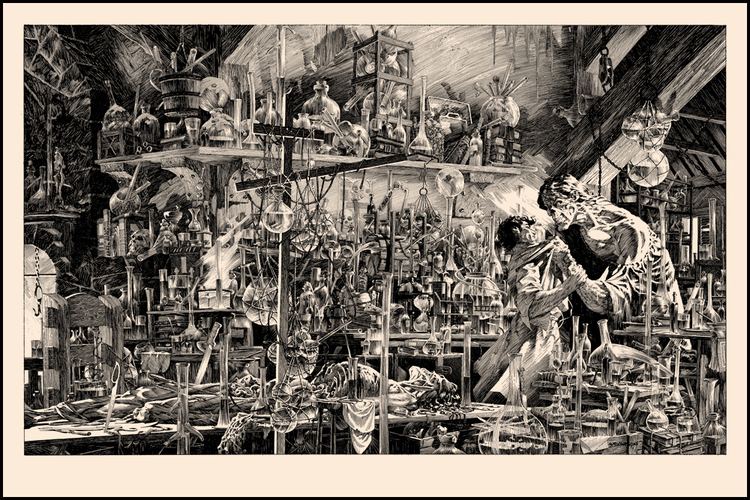
In 1966, Wrightson began working for The Baltimore Sun newspaper as an illustrator. The following year, after meeting artist Frank Frazetta at a comic-book convention in New York City, he was inspired to produce his own stories. In 1968, he showed copies of his sequential art to DC Comics editor Dick Giordano and was given a freelance assignment. Wrightson began spelling his name "Berni" in his professional work to distinguish himself from an Olympic diver named Bernie Wrightson, but later restored the final "e" to his name.
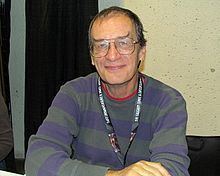
In 1968, he drew his first professional comic book story, "The Man Who Murdered Himself", which appeared in House of Mystery No. 179 (March–April 1969). He continued to work on a variety of mystery and anthology titles for both DC and, a few years later, its principal rival, Marvel Comics. It was for Marvel's Chamber of Darkness and Tower of Shadows titles where he was first encouraged to slightly simplify his intricate pen-and-ink drawing, and where his lush brushwork, a hallmark of his comics inking in the 1970s, was first evidenced.
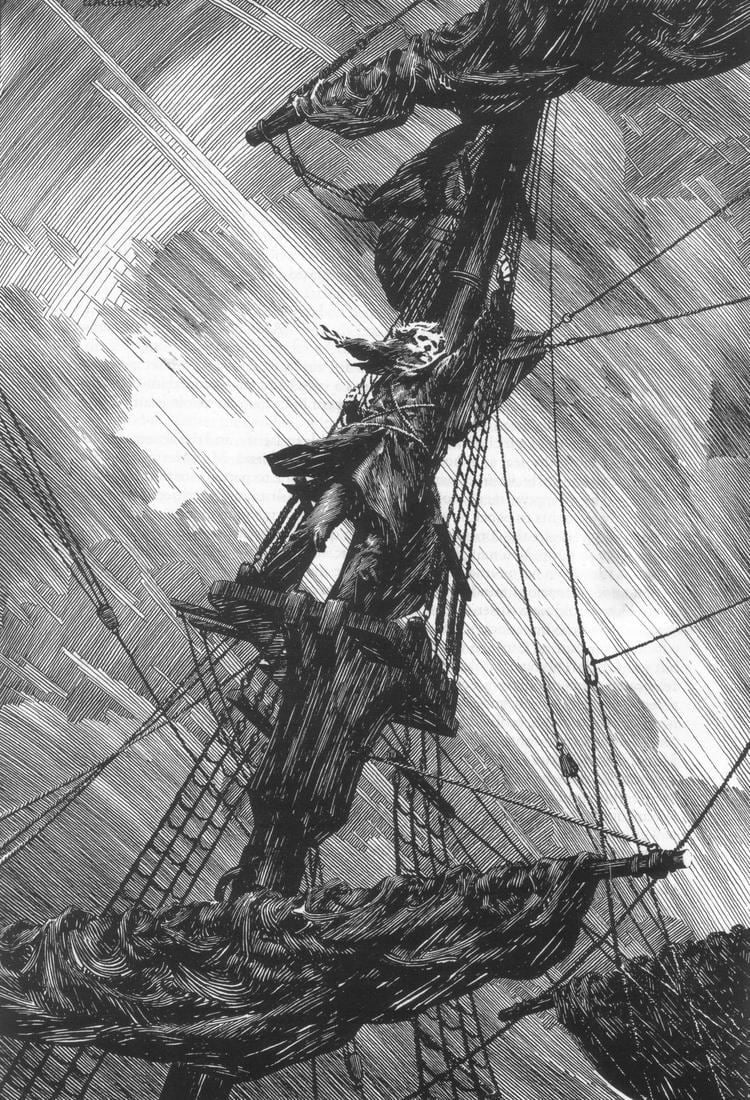
Like many artists in the 1970s and 1980s, Wrightson moved to New York in hopes of finding work with comics publishers such as DC Comics or Marvel Comics. At one point Wrightson lived in the same Queens apartment building as artists Allen Milgrom, Howard Chaykin and Walter Simonson. Simonson recalls, "We'd get together at 3 a.m. They'd come up and we'd have popcorn and sit around and talk about whatever a 26, 27 and 20-year-old guys talk about. Our art, TV, you name it. I pretty much knew at the time, 'These are the good ole days.'"
Swamp Thing
With writer Len Wein, Wrightson co-created the muck creature Swamp Thing in House of Secrets No. 92 (July 1971) in a standalone horror story set in the Victorian era. Wein later recounted how Wrightson became involved with the story: "Bernie Wrightson had just broken up with a girlfriend, and we were sitting in my car just talking about life – all the important things to do when you're 19 and 20 years old. [Laughs] And I said, 'You know, I just wrote a story that actually kind of feels like the way you feel now.' I told him about Swamp Thing, and he said, 'I gotta draw that.'"
In summer 1972 he published Badtime Stories, a horror/science fiction comics anthology featuring his own scripts and artwork (from the period 1970–1971), each story being drawn in a different medium (ink wash, tonal pencil drawings, duoshade paper, screen tones, e.g., along with traditional pen-and-ink and brushwork).
He and writer Marv Wolfman co-created Destiny in Weird Mystery Tales No. 1 (July–Aug. 1972), a character which would later be used in the work of Neil Gaiman.
In the fall of 1972 the Swamp Thing returned in his own series, set in the contemporary world and in the general DC continuity. Wrightson drew the first ten issues of the series. Abigail Arcane, a major supporting character in the Swamp Thing mythos was introduced in issue No. 3 (Feb.-March 1973).
Wrightson had originally been asked by DC to handle the art for its revival of The Shadow, but he left the project early on when he realized he could not produce the necessary minimum number of pages on time, along with his work on Swamp Thing. Michael Kaluta illustrated the series, but Wrightson did contribute much to the third issue in both pencils and inks, as well as inking the splash page of issue four.
Warren and The Studio
In January 1974, he left DC to work at Warren Publishing, for whose black-and-white horror-comics magazines he produced a series of original work as well as short story adaptations. As with BadTime Stories, Wrightson experimented with different media in these black-and-white tales: Edgar Allan Poe's "The Black Cat" featured intricate pen-and-ink work which stood in direct contrast with his brush-dominated Swamp Thing panels. "Jenifer", scripted by Bruce Jones, was atmospherically rendered with gray markers. "The Pepper Lake Monster" was a synthesis of brush and pen-and-ink, whereas H.P. Lovecraft's "Cool Air" was a foray into duotone paper. "Nightfall" was an exercise in ink wash. "Clarice" was also drawn in pen, brush, and ink, and with ink wash.
In 1975, Wrightson joined with fellow artists Jeffrey Catherine Jones, Michael Kaluta, and Barry Windsor-Smith to form The Studio, a shared loft in Manhattan where the group would pursue creative products outside the constraints of comic book commercialism. Though he continued to produce sequential art, Wrightson at this time began producing artwork for numerous posters, prints, calendars, and even a highly detailed coloring book. He also drew sporadic comics stories and single illustrations for National Lampoon magazine from 1973 to 1983.
Wrightson spent seven years drawing approximately 50 detailed pen-and-ink illustrations to accompany an edition of Mary Shelley's novel Frankenstein.
Later career
The "Captain Sternn" segment of the animated film Heavy Metal is based on a character created by Wrightson (first appearing in the June 1980 issue of Heavy Metal magazine). The Freakshow graphic novel, written by Bruce Jones and illustrated (via pen, brush, and ink with watercolors) by Wrightson, was published in Spain in 1982 and serialized in Heavy Metal magazine in the early 1980s.
In 1983 Bernie Wrightson illustrated the comic book adaptation of the Stephen King-penned horror film Creepshow. This led to several other collaborations with King, including illustrations for the novella "Cycle of the Werewolf", the restored edition of King's apocalyptic horror epic, The Stand, and Wolves of the Calla, the fifth installment of King's Dark Tower series. He would later illustrate the cover for TV Guide magazine's April 26 – May 2, 1997 issue, illustrating the TV miniseries of King's The Shining.
During production on the 1984 film Ghostbusters, Wrightson was among the artists hired by associate producer Michael C. Gross to provide concept art envisioning the ghosts and other psychic phenomena encountered by that film's characters. The artwork he contributed included images of the "escapees" from the Ghostbusters' electrically-powered ghost storage facility, which run amok after the facility's electricity is turned off.
Jim Starlin and Wrightson produced Heroes for Hope, a 1985 one-shot designed to raise money for African famine relief and recovery. Published in the form of a comics "jam", the book featured an all-star lineup of comics creators as well as a few notable authors from outside the comic book industry, such as Stephen King, George R. R. Martin, Harlan Ellison, and Edward Bryant. In 1986, Wrightson and writer Susan K. Putney collaborated on the Spider-Man: Hooky graphic novel. That same year saw Wrightson and Starlin produce a second benefit comic, Heroes Against Hunger featuring Superman and Batman which was published by DC and like the earlier Marvel project featured many top comics creators. Starlin and Wrightson collaborated on two miniseries in 1988, The Weird and Batman: The Cult, as well as Marvel Graphic Novel No. 29 featuring the Hulk and the Thing for Marvel.
He has illustrated cards for Last Unicorn Games' collectible card game Heresy: Kingdom Come, and has contributed album covers for a number of bands, including Meat Loaf.
Wrightson did production design for the characters the Reavers in the 2005 film Serenity.
In 2012, Wrightson collaborated with Steve Niles on Frankenstein Alive, Alive! published by IDW Publishing, for which he won a National Cartoonists Society's award.
Personal life
Wrightson's first wife Michele Wrightson was involved in underground comix, contributing stories to such publications as It Ain't Me, Babe, Wimmen's Comix, and Arcade. She died in 2015. Wrightson and Michelle had two sons together, John and Jeffrey.
Wrightson lived with his second wife Liz Wrightson and his stepson Thomas Adamson in Austin, Texas.
Wrightson announced in January 2017 that he was retiring because of his battle with cancer. He died on March 18, 2017, at the age of 68. The next day, Liz Wrightson confirmed that his death followed a long battle with brain cancer. "The First Day of the Rest of Your Life", the April 2, 2017 season 7 finale of the TV series The Walking Dead, was dedicated to Wrightson's memory.
Creative legacy
Wrightson's death met with a series of testimonials and tributes by colleagues and professional admirers that included Joss Whedon, Neil Gaiman, Guillermo Del Toro, Walter Simonson and Mike Mignola. Whedon called Wrightson "a star by which other pencillers chart their course", while Gaiman stated that Wrightson was the first comics artist whose work I loved. Horror connoisseur del Toro took a 24-hour pledge of silence in honor of Wrightson, writing, "As it comes to all of us, the end came for the greatest that ever lived: Bernie Wrightson. My North dark star of youth. A master." Hellboy creator Mike Mignola said of Wrightson, "He was a genius, and not just a monster guy. Everything Bernie did had soul."
Wrightson's former neighbor Walter Simonson, who lived in the same building as Wrightson in the 1980s, recalled, "Even at an early age, we were all really in awe of his work, it was so good." Analyzing Wrightson's skill in depth, Simonson explained that in addition to his ability to draw anything, Wrightson was a master of value, able to effect a precise command over the depth and tones of the colors and shades of grey in his work, stating, "In drawing or in painting, one of the things that you control is the value, which is the light and dark. If you were to take your color TV set and somehow turn off the color and just have a black and white and gray picture, you're looking at the values of those color pictures. 'Frankenstein' is a complete masterpiece of value, using incredibly complex pictures, and yet you always see exactly what you are supposed to see. He drives the eye right where it needs." Regarding the famously reproduced two-page spread from that work depicting Frankenstein's laboratory, Simonson said of that image, "It's so complicated and yet he's able to show you what he wants you to see. In some ways [the lab scene is] the core of the story. It's where Frankenstein breaks the laws of God. I think people were just drawn to it cause it's so completely over the top and yet it's so completely controlled at the same time." Comics analyst and historian Scott McCloud called that image a "riot of detail", saying, "It might take a moment before you even notice the corpse laying at the bottom of the composition on the left. That makes it a bit more of a treasure map. Bit more of a 'Where Is Waldo?'"
During a 2016 tour of his extensive library of art and pop culture memorabilia, Del Toro named Wrightson's Frankenstein as the work whose original artwork was the hardest to find, saying, "They are very rare. The people that have them don't let them go. It's taken me years to get that. I have nine out of the 13 favorite plates of the Frankenstein book that Bernie Wrightson ever did. The other four: one of them, no one knows where it is, and the other three are, I would say, very hard to pry away from the people that have them."
Awards
Wrightson won the Shazam Award for Best Penciller (Dramatic Division) in 1972 and 1973 for Swamp Thing, the Shazam Award for Best Individual Story (Dramatic) in 1972 for Swamp Thing No. 1 (with Len Wein). He received additional nominations, including for the Shazam Award for Best Inker in 1973 for Swamp Thing, as well as that year's Shazam for Best Individual Story, for "A Clockwork Horror" in Swamp Thing No. 6 (with Len Wein).
Wrightson was a recipient of the 1974 Comic Fan Art Award for Favorite Pro Artist. He was a nominee for the same award, then known as the "Goethe Award," in 1973.
Wrightson was co-recipient of the Bob Clampett Humanitarian Award for 1986, along with Jim Starlin, for his work on Heroes for Hope. The following year, Wrightson received an Inkpot Award.
Wrightson received the H.P. Lovecraft Award (also known as the "Howie") at the 2007 H.P. Lovecraft Film Festival in Portland, Oregon.
He received the National Cartoonists Society's award in the category Comic Books for 2012 for Frankenstein Alive, Alive!.
He was awarded the Inkwell Award Special Recognition Award in 2015 for his 45-plus years of work, including co-creating DC Comic's Swamp Thing and Frankenstein.
